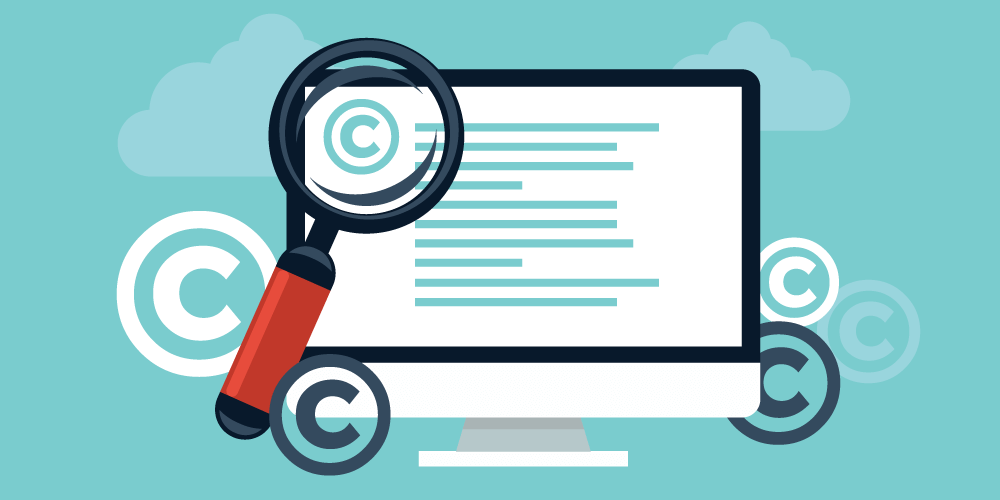
Ahhhhh the internet, something we can’t live without (seriously though, HOW did we live without it!). It gives us access to a wealth of information, entertains us, allows us to communicate with people all over the world and make purchases from the comfort of our own home. Design inspiration is readily available at your fingertips via design blogs, websites social media and Pinterest. In many ways, the internet is really useful as a tool to promote your work, but it poses the question, how much design is being appropriated and recycled and how protected is your original content and what are the stakes at hand if your site happens to be the victim of content theft.
Data is a valuable asset for your business so you don’t want this to fall into the hands of your competitors! Your site being copied can impact your business negatively and might result in a loss of client trust towards your business, reduced site speed, loss of content control and a lowered search engine ranking. This is why, if you find your site has been copied it’s important to take action as soon as possible.
In the last six months, Juno has had many occasions where our work has been used without our permission. These offenders have copied (word-for-word) the text on our website and used images from our client portfolio, passing off as their own. As we’ve all been taught, imitation is the highest form of flattery, but when you’re running a business, this is incredibly disappointing. We spend hours designing original concepts for our clients and writing content for our own website, so to have other designers take advantage of this for their own financial gain, is very frustrating. We thought we’d share a little info on what to do, should find yourself in a similar situation.
Copyright infringement.
How do I find out if my content has been copied?
This might be something you stumble upon accidentally or you have an inkling that someone out there is using your content illegally. There are two ways you can search for content, either text-based content or image-based content.
Text: To find out if your text has been directly copied – Originality.ai is a good option, simply type in your website url and Originality.ai will search for duplicate text content. If your curious who has been copying Juno recently check it out on Originality.ai.
Images: If you think someone is using your images Google reverse image search allows you to upload your images to check if they appear on anyone else’s websites. You can click the camera icon in the search bar, upload the image you’re suspicious has been used and Google will show you all locations the image appears online.
Ok so you’ve done your research and found that your website has been copied…. what can you do about it and how can you make sure it doesn’t happen again?
1. Find the website owner
The first step is to find the owner of the website. It’s a good idea to contact the person directly first as it might not have been copied intentionally. When you do get in touch with the perpetrator make sure you approach the email with a friendly, non-aggressive tone. Starting off with an accusing tone will not get you very far in working out a resolution. There are a variety of reasons your site might have been copied without the owner realising, it could be that they’ve hired a dodgy web designer/developer who have straight out used your sites content or that they don’t understand the laws and don’t realise they have broken the law. Under the Digital Millennium Copyright Act all content published online is protected under copyright law, whether you have a disclaimer on your website or not. You can explain that online content is the same as printed content (You wouldn’t copy a magazine article so why should an online article or website be any different?)
2. Use online tools to report the website
If you try to get in contact with the website owner but don’t hear back from them then you can follow-up your actions by attempting to report their site. There are a number of resources out there to help you report sites and let Google know that there is “funny business” going on. Follow the steps below to report the website and steps will be taken by Google (should they also feel the reported website is doing wrong) to de-list the website or have it removed from Google’s site index.

Lodge a request with Google to remove search results that link to material that infringes copyright. You can find out more here.

Lodge a request via web master tools to have the offenders page de-indexed here.

If you believe video content has been posted on youtube without your permission you can lodge a YouTube infringement request.
3. Document your actions
Any actions you take in reporting a site or writing to the owner should be documented, this will help your case if you do go to the step of getting legal advice.
4. Get legal advice
There are plenty of Intellectual Property lawyers who specialise in digital media copyright, should none of the above steps get you closer to a resolution. If the site copying your content is stealing your clients, is a direct competitor or noticeably causing your business harm then getting advice from a lawyer is a good idea. An official letter from a lawyer will very quickly scare anyone off who is intentionally copying your website.
If you’re not finding the culprit is having an impact on your business then perhaps it won’t be worth your while to pay lawyers fees (and potentially have to face a court trial).
5. Prevention
There are a few steps you can take to prevent your site from being copied. The first thing you should always put on your site is a copyright disclaimer (Copyright © 2015 – Company Name). This will give you more leverage if it comes to a court case. You can also reference your disclaimer when you write your initial email for more leverage. A more extreme step (often used by photographers) is to watermark your images, this is only recommended if you’re making a direct profit from the imagery as it can detract from the look of your site.
Scripts and robots have made it possible to lift content of websites, this is known as ‘data scraping’, ‘screen scraping, ‘web scraping’ or ‘web harvesting’. They use scripts which are sometimes similar tools used by Google and Yahoo when search indexing, this makes it difficult to spot the difference between good and bad bots. Scrapers also use anonymous proxies which can help them avoid being found out. You can stop robots from scraping your site with traditional security devices such as firewalls to detect or block them or you can use online tools such as Corero’s First Line of Defence Technology. An app like this can block unwanted website traffic and identify human visitors vs non-human visitors and can block the bot in real-time.
*We’re designers (not lawyers) so any advice in this article shouldn’t be taken as legal advice.
